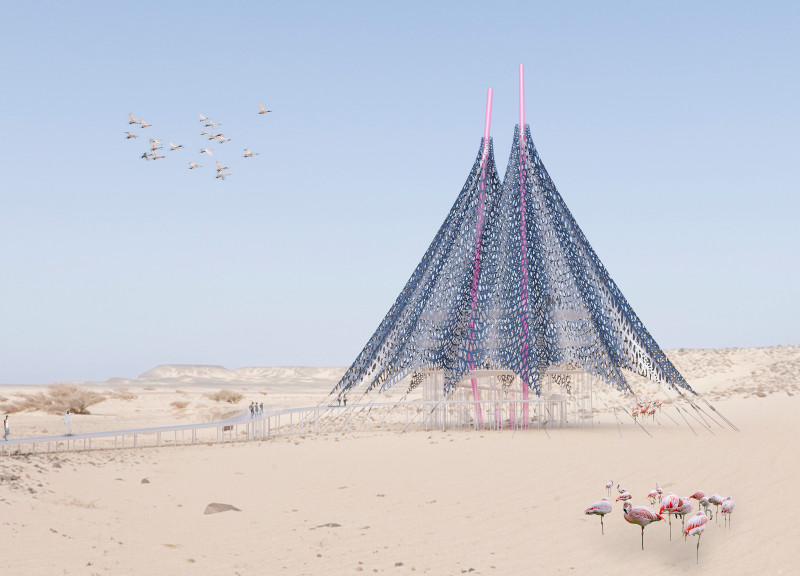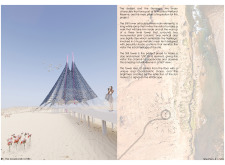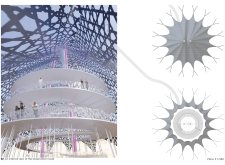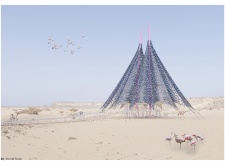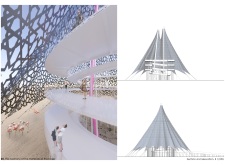5 key facts about this project
The project under analysis represents a nuanced integration of architecture and functionality, addressing the needs of its intended users while responding to the environmental context. The design serves as a multifunctional space aimed at promoting both community interaction and individual experience. With its distinct architectural elements, the building appears to be a well-crafted composition that embodies contemporary design principles.
The overall concept focuses on sustainability, adaptive use of materials, and the creation of flexible spaces. The architectural design embraces natural light through strategically placed windows and open areas, allowing for a seamless connection between the interior and exterior environments. This incorporation of daylight is fundamental to the project's ability to create an inviting atmosphere.
The façade utilizes a combination of materials including concrete, glass, and steel, which work cohesively to define the structure's character. Concrete serves as the primary structural material, offering durability, while glass enhances transparency and offers visual connections to the surroundings. The steel elements provide structural support, ensuring both aesthetic appeal and functionality.
One of the project’s notable features is its unique roof design, which incorporates green elements to enhance the building's sustainability. This integration of landscaping on the roof not only contributes to insulation and energy efficiency but also introduces biodiversity within an urban setting.
The interior organization reflects a thoughtful layout wherein spaces are designed for flexibility and adaptability. Movable partitions allow for configuration adjustments to accommodate varying functions, such as community events or smaller gatherings. This aspect of the design illustrates a commitment to evolving user needs over time.
An emphasis on user experience is pivotal in this project. The circulation patterns promote accessibility, guiding individuals through the space naturally and intuitively. The presence of communal areas fosters interaction, which is essential for the intended community-focused use of the building.
Landscape design has been integrated into the overall architectural concept, with outside areas that encourage engagement with nature. The landscaping includes native plant species that require minimal maintenance and water, reflective of the project's sustainable ethos. This attention to the relationship between architecture and landscape exemplifies the holistic approach to design.
Materials used throughout the project include: - Concrete - Glass - Steel - Wood (for interior finishes) - Green roofing materials (soil, vegetation)
In summary, this architectural project stands out due to its emphasis on sustainability, adaptability, and community interaction. Its design features—such as the unique roof garden, flexible interior layouts, and careful material choices—distinguish it from conventional designs. Readers are encouraged to explore the architectural plans, architectural sections, and architectural designs presented in detail to fully appreciate the depth and intent behind this project.


